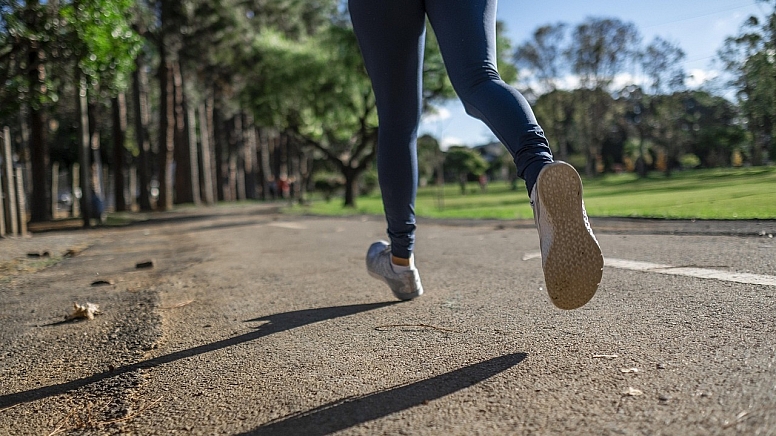
Functional Fitness: Exercises That Help in Daily Life
Forget isolated bicep curls—the best workouts prepare your body for actual daily demands. Functional fitness trains muscles to work together, mimicking how you move in everyday life.
Whether you're lifting groceries, playing with the kids, or hauling luggage, these exercises build strength where it matters most.
Why Functional Fitness Beats Traditional Workouts
Traditional gym routines often focus on single muscles, but real life requires full-body coordination. Functional fitness:
✔ Reduces injury risk by strengthening stabiliser muscles
✔ Improves balance for safer movement as you age
✔ Saves time by working multiple muscle groups simultaneously
✔ Translates directly to chores, sports, and unexpected physical tasks
A Journal of Strength and Conditioning Research study found functional training improved daily mobility 40% more than weight machines.
5 Essential Functional Exercises That Strengthen Real-World Movement
1. Farmer’s Carry (Grocery Bag Simulator)
How: Walk 30-60 seconds holding heavy dumbbells/kettlebells at your sides
Real-life benefit: Carrying laundry baskets, moving furniture
2. Squat to Overhead Press (Lifting Packages Overhead)
How: Squat with weights at shoulders, stand and press upward
Real-life benefit: Storing luggage in overhead compartments
3. Single-Leg Deadlift (Picking Up Dropped Items Safely)
How: Hinge at the hips while lifting one leg backwards, keep your back flat
Real-life benefit: Preventing back strain when grabbing things off the floor
4. Rotational Medicine Ball Throws (Twisting Motions)
How: Throw the ball against the wall with controlled torso rotation
Real-life benefit: Shovelling snow, reaching across car seats
5. Step-Ups With Knee Drive (Climbing Stairs With Heavy Items)
How: Step onto the bench while driving the opposite knee upward
Real-life benefit: Carrying a child up steps
(Progression tip: Add weight once bodyweight becomes easy)
Functional Workout Plan (20 Minutes, No Gym Needed)
| Exercise | Sets | Reps | Household Alternative |
|---|---|---|---|
| Chair Squats | 3 | 12-15 | Sitting/standing on the couch |
| Towel Rows | 3 | 10 | Opening heavy doors |
| Couch Pushups | 3 | AMRAP* | Pushing yourself up from the floor |
| Stair Calf Raises | 3 | 15 | Tiptoe reach for high shelves |
*AMRAP = As Many Reps As Possible
Equipment-Free Functional Modifications
| Instead of... | Use... |
|---|---|
| Kettlebells | Gallon water jugs |
| Resistance bands | Towels for pulling motions |
| Weighted vest | Backpack with books |
| Balance board | Cushioned sofa arm |
The Science Behind Functional Movements
Your body operates in three planes of motion:
- Sagittal (forward/backwards) - Walking, squatting
- Frontal (side-to-side) - Side lunges, reaching across the body
- Transverse (rotation) - Turning to back up a car
Traditional workouts often ignore frontal and transverse planes, creating muscle imbalances. Functional exercises correct this by training all three:
- Rotational lunges prep for golf swings
- Lateral shuffles prevent ankle rolls on uneven terrain
- Push-pull combos simulate opening stuck windows
Functional Fitness for Different Life Stages
Ages 20-40:
Focus on explosive movements (jump squats) for active parenting/sports
Ages 40-60:
Emphasis on joint-friendly motions (step-ups instead of jumps)
60+:
Balance drills (heel-toe walking) to prevent falls
(Mayo Clinic recommends functional training 2-3x weekly for older adults)
FAQs
Q: Can functional fitness build muscle?
A: Yes—compound movements recruit more fibres than isolation exercises.
Q: How is this different from CrossFit?
A: CrossFit incorporates functional moves but at a higher intensity. Functional fitness prioritises form over speed.
Q: Can I do this with back pain?
A: Consult a PT first, but properly executed functional moves often alleviate pain by correcting imbalances.
Q: How soon will I notice improvements?
A: Most people feel more capable within 2-3 weeks of consistent training.
Make Functional Movement Your Default
The ultimate test? Next time you:
- Lift a heavy suitcase
- Catch yourself from slipping
- Play tag with your kids
...you'll realise your workouts have been preparing you all along.
Challenge: Replace one machine exercise with a functional alternative this week—your future self will thank you when effortlessly hoisting holiday decorations.
Why Functional Movement Feels Natural

Your body thrives on practical, whole-body motions—the kind you use in daily life, not just in the gym. Functional fitness works because it trains your muscles the way they’re naturally meant to move:
- Carrying heavy loads (like groceries or luggage → farmer’s carry)
- Pushing and pulling objects (opening doors, moving furniture → row and press variations)
- Twisting and rotating (reaching across your body, turning to look behind you → medicine ball throws)
Unlike isolated exercises that work one muscle at a time, functional movements engage multiple muscle groups in coordination, just like real-world tasks require. This is why they often feel more intuitive than, say, sitting on a machine to do leg extensions.
The Lost Art of Everyday Strength
Throughout history, physical activity wasn't exercise - it was simply life. Just a few generations ago, people:
- Hauled water from wells daily
- Regularly climbed trees for fruit or repairs
- Threw hay bales or tools as part of farm work
Today's modern comforts - cars instead of walking, elevators over stairs, delivery instead of shopping - have quietly eroded our natural fitness. We haven't become weaker as a species; we've simply outsourced our strength to machines and convenience.
The irony? Our bodies still crave and need that same level of movement. Functional fitness bridges this gap by training the real-world strength our grandparents took for granted.
Key Insight: What was once unavoidable daily exertion now must become intentional movement. The good news? Your body remembers how to move this way - it just needs consistent practice.
Challenge: Notice one modern convenience you rely on (like driving short distances) and replace it with an active alternative (walking) just once this week. Your muscles will thank you.
The Forgotten Strength of Our Ancestors
Human bodies were forged through survival movements - none more essential than the art of spear hunting. Every throw required:
-
Rotational Power: Torquing the torso to launch spears → Same mechanics as modern medicine ball throws
-
Explosive Leg Drive: Lunging forward to increase throwing force → Mirrored in split-stance cable rotations
-
Precision Under Fatigue: Repeated throws while tracking prey → Similar endurance demands as battle rope circuits
Why This Matters Today
We still use these same movement patterns daily:
- Rotating to lift children or groceries
- Lunging to catch ourselves from falls
- Maintaining posture during prolonged tasks
Modern gyms isolate muscles, but functional training reconnects us with this innate physical intelligence. When you practice:
-
Rotational chops (spear throw mechanics)
-
Overhead slams (downward strike motion)
-
Sledge pushes (simulating dragging prey)
...you're not just working out. You're reviving primal strength patterns buried beneath modern convenience.
The Payoff: These ancient movement solutions solve modern problems: ✓ Eliminates "mystery" back pain from sedentary life ✓ Prevents injury during unexpected physical demands ✓ Builds resilient strength that lasts decades
When you train functionally, you’re reinforcing movement patterns that already exist in your daily routine, making everything from household chores to playing sports feel easier and more natural.
Think about it: When was the last time you had to do a bicep curl in real life? But how often do you squat down to pick something up, push yourself up from a chair, or carry bags up the stairs? That’s the difference—functional fitness prepares you for what your body does.
Functional Fitness for Desk Workers: Counteracting the Sitting Epidemic
If you spend hours hunched over a keyboard, these targeted functional moves can reverse damage:
1. Thoracic Extension Over Foam Roller
- Fixes: Rounded shoulders from computer posture
- How: Lie with roller under upper back, arms outstretched in "T" position
2. Dead Bugs With Resistance Band
- Fixes: Weak core from sitting
- How: Loop band around feet while performing classic dead bug movement
3. Standing Desk Rotations
- Fixes: Stiff spine from lack of movement
- How: Gently rotate torso while standing, reaching opposite hand to the desk
A 2023 Ergonomics study found that office workers who did 5 minutes of functional movement every hour reported 62% less back pain.
The Unexpected Cognitive Benefits

Functional training doesn't just strengthen muscles—it sharpens your brain through:
Cross-Lateral Movements (like crawling or opposite arm/leg reaches)
- Benefit: Enhances communication between brain hemispheres
Reactive Balancing (such as single-leg catches)
- Benefit: Improves neural response time
Complex Motor Patterns (multi-directional lunges with overhead presses)
- Benefit: Builds new neural pathways to prevent cognitive decline
Neurologists at Johns Hopkins found that seniors doing functional exercises 3x weekly showed 19% better memory retention than those doing traditional strength training.
Functional Fitness in Unexpected Places
Turn daily routines into impromptu workouts:
At the Grocery Store:
- Do calf raises while waiting in checkout
- Carry bags with palms up to engage the rotator cuffs
Playing With Kids:
- Squat instead of bending to pick up toys
- Make a game of bear crawls during playtime
Gardening:
- Use proper hip hinge form when lifting pots
- Alternate kneeling sides to prevent imbalances
These micro-workouts accumulate significant functional strength gains over time.
The 3 Missing Pieces in Most Functional Programs
Even good routines are often neglected:
1. Grip Strength Training
- Why it matters: Predicts longevity (per The Lancet study)
- Add: Towel hangs or fat bar holds
2. Uneven Load Carrying
- Why it matters: Mimics real-life asymmetry (carrying a child on one hip)
- Add: Single-arm suitcase carries
3. Ground Transitions
- Why it matters: Prevents falls in older adults
- Add: Roll-to-stand drills from the back position
Incorporating these takes your functional fitness from good to bulletproof.
Your Next Step
Functional fitness isn't another trend—it's how your body is meant to move. Start today by:
- Auditing one daily movement you struggle with (e.g., reaching high shelves)
- Choosing 2-3 exercises that strengthen that pattern
- Practising them 3x this week during natural moments
The strongest version of you isn't measured by gym numbers, but by how effortlessly you move through life. Where will your functional fitness take you tomorrow?









